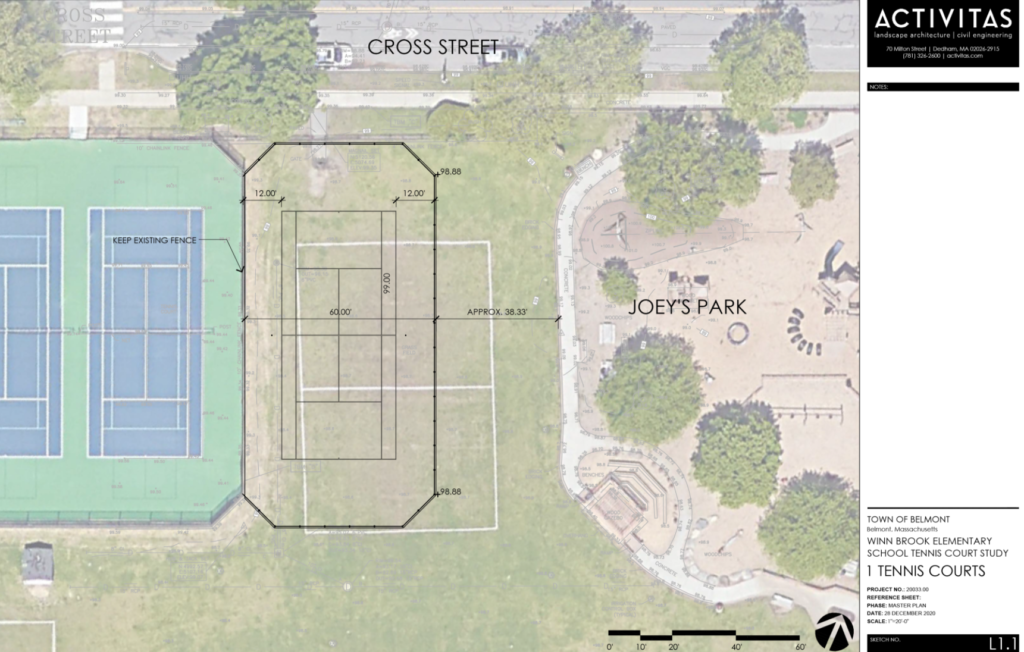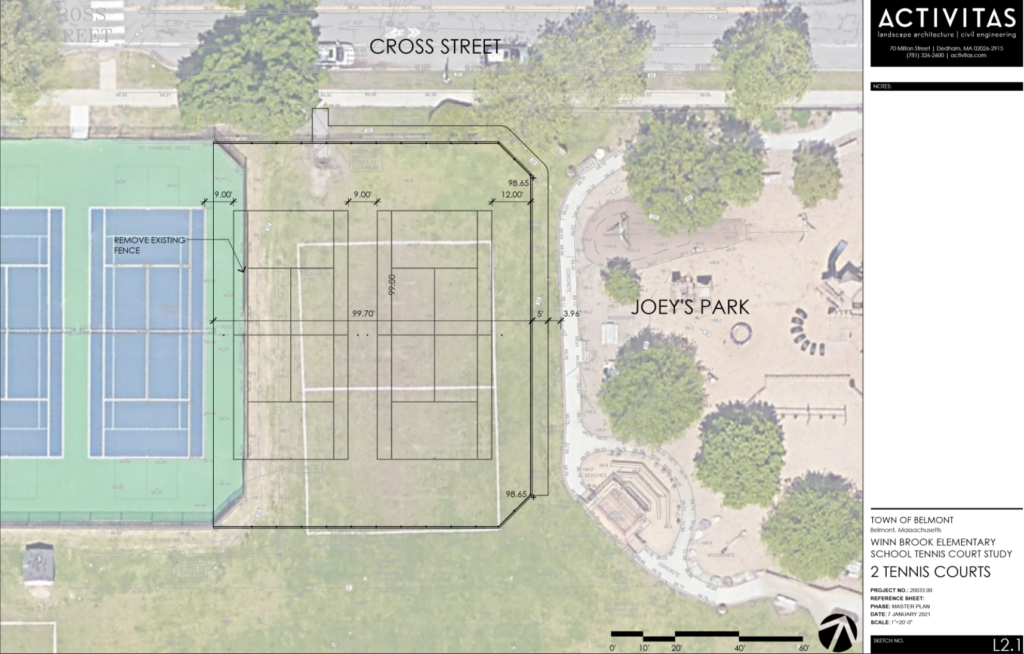Photo: Participants at a rally in Belmont’s Cushing Square condemning the murder of Henry Tapia
By Joe Bernard
One month has passed since Henry Tapia was murdered in Belmont. More than 100 of his friends and neighbors attended the vigil to honor his life and condemn racial violence, during which Kimberly Haley-Jackson, vice chair of the Belmont Human Rights Commission, memorably captured the weight of the moment with four sobering words: “Yes, Belmont, you too.”
At this point in our country’s history, it might be naïve to call a racist hate crime “shocking”, yet it undeniably sent shockwaves through Belmont. It should not have taken a murder for us to recognize that racism exists in our community, but that is what happened.
What do we do next?
Prosecuting the racist who killed Henry Tapia is necessary, but it is not enough. Condemning overt racism and hatred is necessary, but it is not enough. Calls for justice will fall short of their goal if we do not acknowledge and disrupt systemic racism. We must find the ways that our structures and systems protect White supremacy, and we must resolve to change them.
Resolution 1: Empower a Diversity Director for Belmont Public Schools
Belmont Educators of Color and Allies (BECA) is a group of Belmont educators that was established in 2018 with the end goal of eliminating racism in our schools. During 2020, BECA conducted research and surveys with the specific intention of creating action items for the future of Belmont Public Schools. On Sept. 15, they presented their recommendations to the School Committee and heads of the School Department.
One of their recommendations was to hire a Diversity Director. This recommendation is foundational, provided that the position is granted sufficient power within the administration to implement the other recommendations: improving staff diversity, decolonizing the curriculum, arranging antiracist training, and more.
In the proverbial “American dream”, education is intertwined with character values like perseverance and grit. Conventional wisdom uses this paradigm to judge students and their families. Yet, for decades, Black and Brown students have faced more challenges and fewer opportunities, creating the feedback loop of White superiority and the model minority myth.
The impact of this cannot be ignored. In fact, it must be used affirmatively in future hiring decisions. In the words of Congresswoman Ayanna Pressley, “The people closest to the pain should be closest to the power.” Accordingly, Belmont Public Schools must commit to hiring a Black or Brown candidate for Diversity Director, whose lived experience can inform their approach to the real equity work of undoing and healing generations of violence, trauma, and inequity (for further reading, see We Want To Do More Than Survive by Bettina L. Love).
The good news is that the School Department’s preliminary FY22 Position Plan includes this position as one of 10.6 new full-time equivalent employees (FTEs) to be hired for the upcoming school year. But I have heard questioning from influential town leadership and town committees about whether or not to fund all new FTEs in the final FY22 budget, even before the presentations were made showing them as conditional upon a successful override vote.
As of now, there is no certainty that a Diversity Director will be hired anytime soon. Furthermore, there is no certainty that the Diversity Director will be given sufficient power to lead meaningful change, without which the position falls flat, little more than a token hire to check off a to-do list.
To address systemic racism in Belmont, we must ensure that the Diversity Director position is treated as the number one priority — not subjected to funding delays or budget cuts — and is promptly filled by hiring and truly empowering a person of color.
Resolution 2: Allow affordable housing, in addition to Affordable Housing
Chapter 40B, the state’s Affordable Housing law, is a frequent topic of conversation in town. For example, last September’s Town Meeting overwhelmingly approved, by a vote of 256–5, the McLean zoning amendment that will allow a new 40B residential development to proceed. This was great news, as research has shown that segregation is reduced by building a mix of housing types and ensuring that it is affordable to a more diverse set of residents.
But while we continue to acknowledge and act upon the importance of (uppercase) Affordable Housing, let’s not sleep on the impact of (lowercase) affordable housing. That is, allowing the construction or conversion of modest two-family dwellings in place of single-family dwellings, to make our town more accessible to moderate and middle-income residents, welcoming more diversity without using Chapter 40B.
Single-family zoning laws in America have origins in blatant racism. Across the country in the early 20th century, suburbs used this type of zoning to segregate their neighborhoods without the explicit racial zoning that the Supreme Court had ruled unconstitutional (for further reading, see The Color of Law by Richard Rothstein). Yet despite such disgraceful roots, single-family zoning is still venerated by some as the source of suburban “character”, vital to the very existence of suburbs. Similar rhetoric is commonplace in Belmont, and is even written into our Zoning By-Law, which states the purpose of our General Residence Zoning is “controlling density and preserving the character of the associated neighborhoods”.
The construction of a two-family dwelling is not allowed by right anywhere in Belmont. In Single Residence districts, it is strictly prohibited; in General Residence districts, it is allowed only under a Special Permit from the Planning Board, a deliberate extra hurdle. This zoning is a textbook example of what the Brookings Institution and the Boston Foundation recently called out as intentionally restricting the dynamic functioning of the Greater Boston housing market. “Greater Boston’s persistent residential segregation, both racial and economic, has been caused in part by legal prohibitions against the construction of diverse, lower-cost housing options like townhomes, duplexes and small apartment buildings.”
But while the Planning Board possesses a lot of power as the decision-making body, they are not making unilateral decisions to force housing production outcomes. Quite the opposite, I have observed that they are eager for public input and appreciative to receive it from any perspective. Therefore, it seems that some permitting decisions are simply reactions to the voices that they heard the loudest, which means that we need affordable housing advocates to be actively organizing petitions and attending public meetings.
To address systemic racism in Belmont, we must recognize that our 40B Affordable Housing projects are not “enough”, and actively advocate for more multi-family options that will allow an affordable housing market to function.
Resolution 3: Withdraw from Civil Service
The Civil Service system was established by state law in 1884 to eliminate favoritism in the hiring and promotion of public safety employees by providing a merit-based system for all municipalities that choose to participate. Belmont adopted Civil Service for our firefighters and police officers in 1915. The core components of the system are: 1) administering entrance/promotional exams and 2) restricting hires/promotions to a ranked list of candidates. Exam results are combined with other distinct criteria to generate the ranked list, from which a municipality is required to hire/promote from the top.
On its face, this may seem to be an equitable system. However, upon closer inspection of the criteria that are used, it becomes evident that the ranked list is more biased than objective. The demographics of law enforcement and firefighters skew heavily towards White males, which the Civil Service system does more to preserve than to change. Even departments that recognize their own lack of diversity and want to change cannot do so when they are legally bound to the restrictions of Civil Service.
In a July 2020 report and webinar titled The Diversity Deficit: Municipal Employees in Metro Boston, the Metropolitan Area Planning Council (MAPC) detailed key findings and best practices from an analysis of municipal employee demographics. MAPC is a regional planning agency established by state law in 1963 to promote smart growth and regional collaboration among the 101 cities and towns of Metro Boston, including Belmont. Among the best practices they found to address barriers to diversity in municipal workforces was withdrawal from Civil Service.
Why does the Civil Service system have a discriminatory effect? One reason is the veteran preference, which ranks veterans that pass the exam above nonveterans who scored higher. Despite any merits of this preference, the fact is that our veterans are overwhelmingly White males: 72 percent of veterans aged 18–34, compared to 36 percent of the total population aged 18–34, according to statewide census data. Another reason is the residency preference, which gives preference to a candidate that lived in Belmont for a full year before taking the entrance exam. Considering the annual base salary for an entry-level firefighter or police officer in Belmont is approximately $50,000, the lack of affordable housing and the residency preference work hand-in-hand to perpetuate existing demographics in public safety departments.
Withdrawal from Civil Service does not necessarily mean that a veteran preference or residency preference have to be eliminated. Such preferences can be included in the hiring policy that would replace it. But this policy can weigh other important factors as well, and removing the strict legal requirement to adhere to a ranked list effectively addresses the barriers to diversity while providing a larger applicant pool.
Belmont’s withdrawal from Civil Service has already been considered very recently, when the Select Board placed a question to that effect on the warrant for Town Meeting in September 2020. Vocal opposition to this warrant article was heard across town, particularly from our local police and firefighters unions. But it doesn’t have to be so adversarial and divisive. Many other cities and towns have withdrawn from Civil Service in recent years, so Belmont has plenty of examples to use for mapping our path forward.
While we can hope that town and union representatives find a mutually agreeable way to do so, to address systemic racism in Belmont, we must withdraw from Civil Service one way or another.
Renée Graham, during her keynote speech at Belmont’s Dr. Martin Luther King, Jr. Virtual Community Celebration, observed that people tend to think that racism is a problem elsewhere, not in their own community. Well, the fact that racism is a problem in our own community was brutally exposed. And yet, beyond the hatred of overt racism, we must also see that seemingly race-neutral policies and decisions are not harmless.
Belmont’s systemic racism will not be eliminated by inaction or good intentions. Antiracist progress must be made with deliberate policy decisions. The three that I have outlined here are not an exhaustive list nor the end of the road — there will be more work to be done — but we cannot let the magnitude of the problem discourage us from taking steps towards progress. These steps must be taken in 2021.
Joe Bernard is a Town Meeting Member from Precinct 3. As the father of two Butler School students, his favorite community involvement is coaching youth sports, as well as volunteering for the PTA. He is an active member of Community Organized for Solidarity and Belmont Against Racism.

